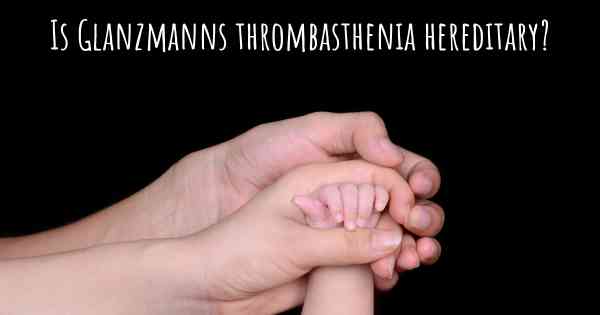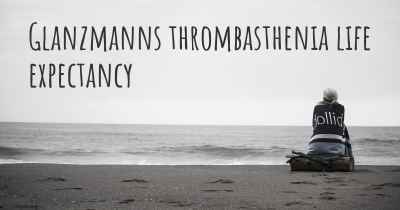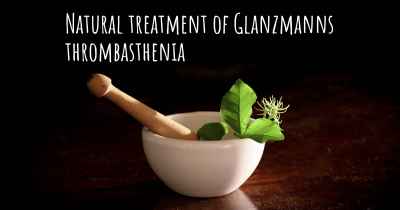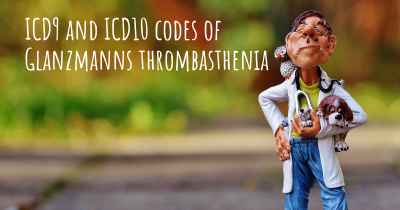Is Glanzmanns thrombasthenia hereditary?
Here you can see if Glanzmanns thrombasthenia can be hereditary. Do you have any genetic components? Does any member of your family have Glanzmanns thrombasthenia or may be more predisposed to developing the condition?

Glanzmann's thrombasthenia is a rare inherited bleeding disorder characterized by a deficiency or dysfunction of a protein called integrin alpha IIb beta 3, which is essential for platelet aggregation. It is hereditary and typically follows an autosomal recessive pattern of inheritance, meaning that both parents must carry a copy of the mutated gene for their child to be affected. Genetic testing can confirm the diagnosis and help identify carriers within families.
Glanzmann's thrombasthenia: Is it hereditary?
Glanzmann's thrombasthenia is a rare inherited bleeding disorder characterized by the inability of platelets to properly clot blood. Platelets are small blood cells that play a crucial role in forming blood clots to stop bleeding. In individuals with Glanzmann's thrombasthenia, platelets lack a specific protein called glycoprotein IIb/IIIa, which is essential for platelet aggregation and clot formation.
Genetic Basis:
Glanzmann's thrombasthenia is primarily caused by mutations in the ITGA2B and ITGB3 genes, which provide instructions for making the alpha IIb and beta 3 subunits of the glycoprotein IIb/IIIa complex, respectively. These genes are located on chromosome 17. Mutations in either of these genes can disrupt the production or function of the glycoprotein IIb/IIIa complex, leading to the characteristic platelet dysfunction seen in Glanzmann's thrombasthenia.
Inheritance Pattern:
Glanzmann's thrombasthenia follows an autosomal recessive inheritance pattern. This means that an affected individual must inherit two copies of the mutated gene (one from each parent) to develop the disorder. If an individual inherits only one mutated gene, they are considered carriers of Glanzmann's thrombasthenia but do not typically experience symptoms.
Carrier Frequency:
The carrier frequency of Glanzmann's thrombasthenia varies among different populations. In populations with a higher prevalence of consanguineous marriages (marriages between close relatives), such as certain communities in the Middle East and South Asia, the carrier frequency can be relatively higher. In these populations, the chance of two carriers having a child with Glanzmann's thrombasthenia is increased.
Family History:
Individuals with a family history of Glanzmann's thrombasthenia are more likely to be aware of their carrier status or have a child with the disorder. If both parents are carriers, there is a 25% chance with each pregnancy that their child will inherit two copies of the mutated gene and develop Glanzmann's thrombasthenia.
Genetic Testing:
Genetic testing can be performed to identify mutations in the ITGA2B and ITGB3 genes, confirming a diagnosis of Glanzmann's thrombasthenia. This testing can also be used to determine carrier status in individuals with a family history of the disorder or those from populations with a higher carrier frequency.
Implications for Family Planning:
Individuals with Glanzmann's thrombasthenia or those who are carriers may consider genetic counseling before starting a family. Genetic counselors can provide information about the inheritance pattern, recurrence risks, and available reproductive options, such as preimplantation genetic diagnosis (PGD) or prenatal testing.
Conclusion:
Glanzmann's thrombasthenia is a hereditary bleeding disorder caused by mutations in the ITGA2B and ITGB3 genes. It follows an autosomal recessive inheritance pattern, meaning that affected individuals must inherit two copies of the mutated gene to develop the disorder. Genetic testing can confirm a diagnosis and determine carrier status, allowing individuals to make informed decisions regarding family planning. Seeking genetic counseling can provide further guidance and support for individuals and families affected by Glanzmann's thrombasthenia.
Posted Oct 3, 2021 by Roberta 100








